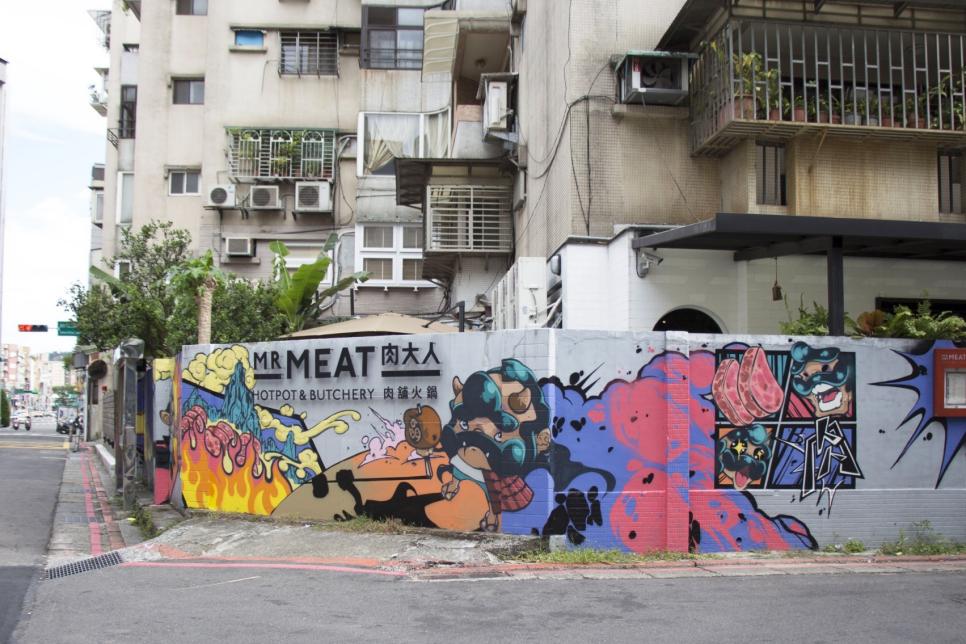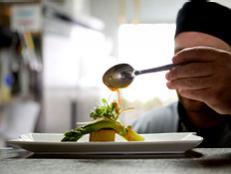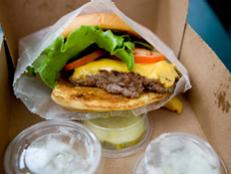25 Taiwanese Foods You Have to Try Now
For too long lumped in with all Chinese food, Taiwanese cuisine is moving into the spotlight. The island state, with Taipei as its capital, has a flavor all its own. Travel Channel spoke to restaurant owners in five cities to get the scoop on essential Taiwanese dishes foodies need to try.

Related To:

Photo By: Mr. Meat
Photo By: Mr. Meat
Photo By: Mr. Meat
Photo By: Mr. Meat
Photo By: GettyImages/Stefan Irvine
Photo By: GettyImages/XING ZHOU
Photo By: Pine and Crane
Photo By: Pine and Crane
Photo By: Pine and Crane
Photo By: Pine and Crane
Photo By: Pine and Crane
Photo By: GettyImages/ADX Collections
Photo By: Jeri Smith Windermere Real Estate, a member of Luxury Portfolio International
Photo By: 19 Gold
Photo By: 19 Gold
Photo By: 19 Gold
Photo By: 19 Gold
Photo By: 19 Gold
Photo By: ©iStockphoto.com/AndreyKrav
Photo By: Shannon Sturgis
Photo By: Shannon Sturgis
Photo By: Shannon Sturgis
Photo By: Shannon Sturgis
Photo By: GettyImages/Portland Press Herald
Photo By: Ben Hon (@stuffbeneats)
Photo By: Ben Hon (@stuffbeneats)
Photo By: Ben Hon (@stuffbeneats)
Photo By: Ben Hon (@stuffbeneats)
Photo By: Ben Hon (@stuffbeneats)
Photo By: Ben Hon (@stuffbeneats)
Taipei
Taiwan's capital city of Taipei is a food mecca, known for its Michelin-starred restaurants and bustling night markets where countless food stalls offer a remarkable array of national delicacies. It is also an ideal place to start your food tour of Taiwan and sample the unique salty-sweet flavor profile that is the hallmark of this island nation's cuisine.
Han and Wina Chen opened Mr. Meat Hot Pot and Butchery in Taipei’s Da An financial district in 2015 to perfect the art of serving fermented ingredients -- specifically, meat. "The origin of hot pot dates all the way back to the Han Dynasty almost 2,000 years ago," notes Wina Chen. "At the time, it was called gu-dong soup, because when you throw the ingredients into the boiling water they make a sound like 'gu-dong.'"
As a five-year anniversary looms, Mr. Meat has become one of the most renowned hot pot spots in Taipei. Here’s a look at their signature dishes, most of which can also be found in the United States.
1: Hot Pot
Mr. Meat’s fermented soups are a crowd pleaser. Here, the eatery blends sour cabbage and fermented chili with fermented garlic or tomato, a protein and vegetable stock. In true hot pot fashion, each dish is delivered to patrons preassembled. Their job is to place the pot on the burner and add meat.
Simmering inside: cabbage, taro, bamboo and radishes blended with bean curd, meatballs, dumplings, dates and goji berries. Traditional proteins like gamy cherry duck, gum ding chicken and Taiwanese black pork can be substituted with beef from Holland, Spain and the United States. The sourness of the fermented ingredients is transformed into sweetness once the fat of the meat cooks into the pot.
2: Braised Pork Knuckles
At Mr. Meat, this crisp and savory dish began as an employee favorite, a holdover from days when meat was scarce in China and no part of an animal was wasted. But when a roaming journalist discovered their hypnotic texture and flavor, pork knuckles soon found their way onto the Mr. Meat menu. Mr. Meat’s pork knuckles are served in a rich broth of chili stock, though accompaniments may vary.
3: Ma La Noodles
The equivalent of Taiwanese fast food, ma la noodles are made for late nights on the town. "'Ma' means numb, 'la' means spicy. You have it when you are super drunk and you wake up right away," laughs Wina Chen. Ma la noodles come in both dried and soup varieties. You’ll know they’re legit if they pack a kick. Ma la noodles are almost always available in both a soup and a dry variety.
4: Stinky Tofu
"I’m the ambassador of stinky tofu," Wina Chen jokes. "We don’t serve it in the restaurant, but I freaking love it. Maybe it’s the same as people who like blue cheese." Her description is an apt one. Stinky tofu is a popular street snack in Taipei that is usually found at sidewalk stalls. The chunky, sometimes fried cubes of fermented tofu usually cost less than $2.00 and often feature a filling like garlic or cabbage. They are typically served in a cardboard box, and the good ones always smell rotten.
5: Aiyu Jelly
One of Wina Chen’s favorite desserts, aiyu jelly is a popular summer treat throughout Taiwan and Singapore. "We usually eat it with lemonade, honey and crushed ice," notes Chen. A giant bowl of jelly may seem perplexing to Americans, but the ingredients are all natural. Aiyu jelly is made from the seeds of a creeping fig plant native to the region. The process involves rubbing a bag full of seeds until they excrete the gel, which then sets into the final product. The result? A refreshing, fruity reprieve from the heat.
Los Angeles
Greater Los Angeles is the cradle of Taiwanese food in America. The San Gabriel Valley — a 200 square mile stretch of land just east of Los Angeles that encompasses 30-plus cities — hosts the most densely populated concentration of Taiwanese Americans in the country. And though you’ll have no trouble finding authentic cooking from the island in Southern California, no restaurant has blossomed quite like Silver Lake’s Pine and Crane has in the latter part of this decade. Pine and Crane's owner and chef Vivian Ku spoke with Travel Channel about some of the essential dishes served in her Los Angeles hot spot.
6: Panfried Pork Buns
"Crispy on the bottom, fluffy on top." That’s how Vivian Ku describes Pine and Crane’s pan fried pork buns. The buns, garnished with scallions and sesame seeds, can be found on streets throughout mainland China and Taiwan. Ku uses Taiwanese cabbage and kurobuta pork, a fine swine most comparable to the Wagyu of pigs, as a filling for an upgraded version of the curbside original.
7: Dan Dan Noodles
Fresh vegetables are a critical component of dan dan noodles, a hot seller at Pine and Crane where chili oil, cucumbers, peanuts and sesame-peanut sauce come together in a flavor fusion that keeps customers coming back for more. Freshly boiled egg noodles are key to a great bowl of dan dan noodles. And though an Americanized version of the dish topped with meat sauce is making the rounds, Ku sticks to the traditional Taiwanese method which lets a spicy broth do the talking.
8: Three Cup Chicken
Ginger, basil, garlic and doses of rice wine, soy sauce and sesame oil combine to make three cup chicken (the original folk recipe, rarely used, called for a cup each of sesame oil, soy sauce and rice wine, thus the name). It’s a dish that you can find at almost every Taiwanese restaurant anywhere in the world. And though the Taiwanese didn’t create the three cup chicken — that distinction belongs to the southern Chinese province of Jiangxi — they’ve adopted it en masse.
Legends say that three cup chicken was variously created by one of Kublai Khan’s sympathetic prison wardens or a simple cook with a lone, earthenware pot. But no matter its roots, three cup chicken is a Taiwanese essential.
9: Spicy Shrimp Wontons
Wontons are one of the most versatile items in the Taiwanese kitchen. These delicate dumplings can be paired with almost any flavor and complement almost every soup. Pine and Crane pairs their wontons with a spicy shrimp filling in a bowl of savory soup to create a dish that can be served as a side or consumed as a meal unto itself.
10: Century Egg
Century eggs are usually made by preserving duck eggs in a mixture of minerals and clay for weeks or months. Sometimes, chicken or quail eggs are substituted, but the result is generally a dark green or grey egg with a creamy consistency.
You won't find century egg on the menu at Pine and Crane, but Ku lends her insight into one of the more well-known Taiwanese culinary curioisities. "It's a dish that most people don't make. It's something they buy in the grocery store. The preparation is pretty simple. They cut it up and serve it with tofu, soy paste and scallions."
Seattle
Seattle is beginning to redefine the line between Taiwanese and Chinese food. At the head of that charge is Fremont Avenue newcomer 19 Gold. "We specialize in so many dishes that you wouldn’t see in a traditional Chinese restaurant," says 19 Gold partner Julia Cheng. "Taiwanese food is generally a little sweeter and lighter. It’s more casual than Chinese food, where you typically see big tables and family sharing. In a Taiwanese restaurant, you kind of just pop in, sit down at a small table and have a beer."
19 Gold is a recent addition to Seattle’s Taiwanese scene. Though the doors opened less than a year ago, patrons are already swarming the restaurant. Cheng says all of the eatery’s ingredients — down to the bubbles in their tea — are sourced directly from Taiwan.
11: Malatang
Malatang is 19 Gold’s signature dish. It’s here that you’ll find a full cupboard of the restaurant’s spices blended into a single entree. If you’ve been paying attention, you know that ma la means numb and spicy. Those flavors come from the combination of Sichuan and dried chili peppers that define the dish, but you’ll find 17 more spices served up in 19 Gold’s version of the dish.
12: Taiwanese Fried Chicken
This Taiwanese street food is a different breed of bird than its fast food, American counterparts. Taiwanese fried chicken is often served popcorn style like the dish you see here. You won’t need dipping sauce for these nuggets. They come loaded with ginger, garlic, white pepper and a spicy punch of flavor.
13: Braised Duck
This is no chicken wing. 19 Gold’s braised duck wings are marinated in star anise, jujube and other Chinese herbs for 16 hours before hitting the oven. The result is an intoxicatingly flavorful wing that, when prepared properly, has a chewy texture that allows time to absorb all of the spices while eating. And, if we’re honest, lingers for a while on both fingers and lips.
14: Cuttlefish Balls
Soft spheres of lightly fried squid are as ubiquitous in Asia as French fries. And if squid balls are French fries, cuttlefish balls are seasoned fries: they’re the next level in flavor. Scientists are not sure why, but global populations of cephalopods — squid, octopus and cuttlefish — have been on the rise since the 1990s. That’s good news for them and you as this timeless Taiwanese snack begins to spread its wings on American soil.
15: Bubble Tea
Yes, we’ve finally arrived at Taiwan’s most well-known culinary gift to the world: bubble tea. Also known as boba tea, this sweet treat usually blends milk and sugar with fruit and chewy tapioca balls or grass jellies. Bubble tea is available in almost every flavor imaginable from peach to mango to matcha and everything in between. The secret to great bubble tea? A density of at least 25-35 percent bobas, for starters.
Atlanta
In 2014, Andy Chen co-founded Ah-Ma’s Taiwanese Kitchen in Atlanta with his brother Alex. The pair grew up in the restaurant scene, but author and chef Eddie Haung’s 2013 memoir, Fresh Off the Boat, inspired them to focus entirely on Taiwanese food. "My brother and I were trying to reconnect with our roots a little, since we were both born and raised in the U.S.," says Andy Chen. "We read Fresh Off the Boat, and that kind of hit home for us because we grew up in a similar way. Our dad owned Chinese American restaurants growing up. It was a good way to get by and make money, but it didn’t really resonate with us."
16: Lu Rou Fan
"Some people say Taiwanese cuisine is the true preservation of Chinese food," notes Andy Chen. "Chinese food has changed so much throughout its history." That culinary heritage can be seen in lu rou fan, a dish sometimes credited to Shandong, China. Lu rou fan, also known as braised pork rice, should be one of your go-to introductions to Taiwanese food. Lu rou fan consists of braising pork cut into small slices. Ah-Ma’s tops theirs with cilantro, pickled daikon and soy braised egg.
17: Gua bao
The classic Taiwanese dish gua bao (also known as pork belly buns) is an endlessly variable dish that can be altered with proteins and condiments of your (or your chef's) choosing. Ah-Ma’s serves pork, chicken, beef, veggie and shrimp bao; but Chen says the top seller is the pork belly original. Ah-Ma’s takes advantage of Georgia’s agriculture by sourcing its pork from Riverview Farms, about 70 miles outside of Atlanta. And they hand cut the meat — because carelessness with pork is a crime worthy of eviction in the South — for maximum flavor and texture.
18: Stir-Fried Xiang Chang
Xiang chang, Taiwan’s world-renowned sausage has a cult following among foodies, but according to Chen there’s a slight problem with most of the xiang chang found stateside.
"Most sausages you see in the U.S. are dried," explains Andy Chen. "We worked with our local butcher at Heywood’s Provision Company to recreate the fresh, Taiwanese sausage we grew up with." Ah-Ma’s then takes that sausage and tosses it in a stir fry.
19: Chili Oil Wontons
You’ve probably noticed that chili is a central ingredient in Taiwanese food by now, and you’ll often find chili oils accompanying wontons like the pork and shrimp variety seen here. The key to great chili oil? Care. "The chilies are toasted before we infuse the oil for the base," says Andy Chen. "Our chili oil is made more towards our flavor preferences where sweet, salty, acidic and savory elements are more balanced than a Szechuan version."
20: Shaved Ice
You'll find a different take on shaved ice throughout China, Japan, Korea and Singapore. Ah-Ma's doesn't keep shaved ice on hand. According to Andy Chen, the closest place to find that in Atlanta is down the street at a Korean restaurant, which is apt. "Every country has their own version of it. It's basically the same thing, but when you break it down there are little nuances."
Depending on who you ask, the traditional Taiwanese take on shaved ice, called tsua bing, is made with mango, a pile of finely shaven ice and a drizzle of condensed milk.
New York City
If Los Angeles is the cradle of Taiwanese food in America, New York is its playground. The city is in the midst of a Taiwanese cuisine boon. In the past decade, a smattering of Big Apple Taiwanese restaurants have blossomed into dozens. You can visit Eddie Haung's Baohaus, the one that started it all, or you can try any number of newcomers brimming with flavor.
886 joined the scene in 2018, moving into the East Village with modern twists on classic Taiwanese flavors. The menu at this clever, modern take on Taiwanese is differentiated from its brethren by cheeky menu items like a spin on the McDonald’s chicken sandwich. Travel Channel sat down with general manager Stefanie Kung to talk about 886’s fresh take on the classics.
21: Beef Noodle Soup
This is modern Taiwanese cooking 101. Beef noodle soup is nearly as synonymous with Taiwanese cuisine as bubble tea. Nearly every Taiwanese restaurant in the world has their own take on this wildly popular dish, and Kung describes her restaurant's take: "Ours is done in a style of ‘red cooking,’ a long, simmering bone broth seasoned with Chinese herbs, vegetables and soy sauce. We combine that with a hearty bowl of noodles, bok choy and large chunks of braised beef shanks."
22: Scallion Pancake Beef Wrap
886’s scallion pancake beef wrap is a take on a Taiwanese staple, the scallion pancake. These flaky pancakes are usually served solo with a side of chili sauce. They’re a street market staple in Taiwan, but 886 has taken them to a new level in true, New York style. "After being braised for 16 hours, tender chunks of beef shank are deep fried and rolled into the pancake," explains Kung. Garlic and oil are cooked down with herbs and spices to create a chili sauce-powered mayo.
23: Hsinchu Mifen
Hsinchu mifen is a food stall staple that’s now making its way onto more restaurant tables. Pickled bamboo, sakura shrimp, shitake mushrooms and ground pork are sautéed and blended with vermicelli and cilantro to create a quick-and-easy dish that stands alone or partners with an array of sides.
24: Oyster Omelette
The humble oyster omelette has left a lingering impression on many a traveler’s memories from Taiwan, and it’s a growing fixture in the U.S. too. "The omelettes get their unique texture from a cooked, chewy layer of sweet potato starch, crispy bean sprouts and fresh oysters," says Kung. "We finish them off with a generous drizzle of our house-made sweet 'n' spicy sauce and fresh herbs."
25: Hakka Stir Fry
Hakka stir fry dates back centuries to a then-migrant group of peoples from central China, many of whom made their way to Taiwan. The dish traditionally blends vegetables like celery and fermented black beans with cured strips of pork belly. In Taiwan, Hakka stir fry usually includes squid, but some U.S. restaurants like 886 omit the ingredient if it can’t be sourced from Taiwan.







